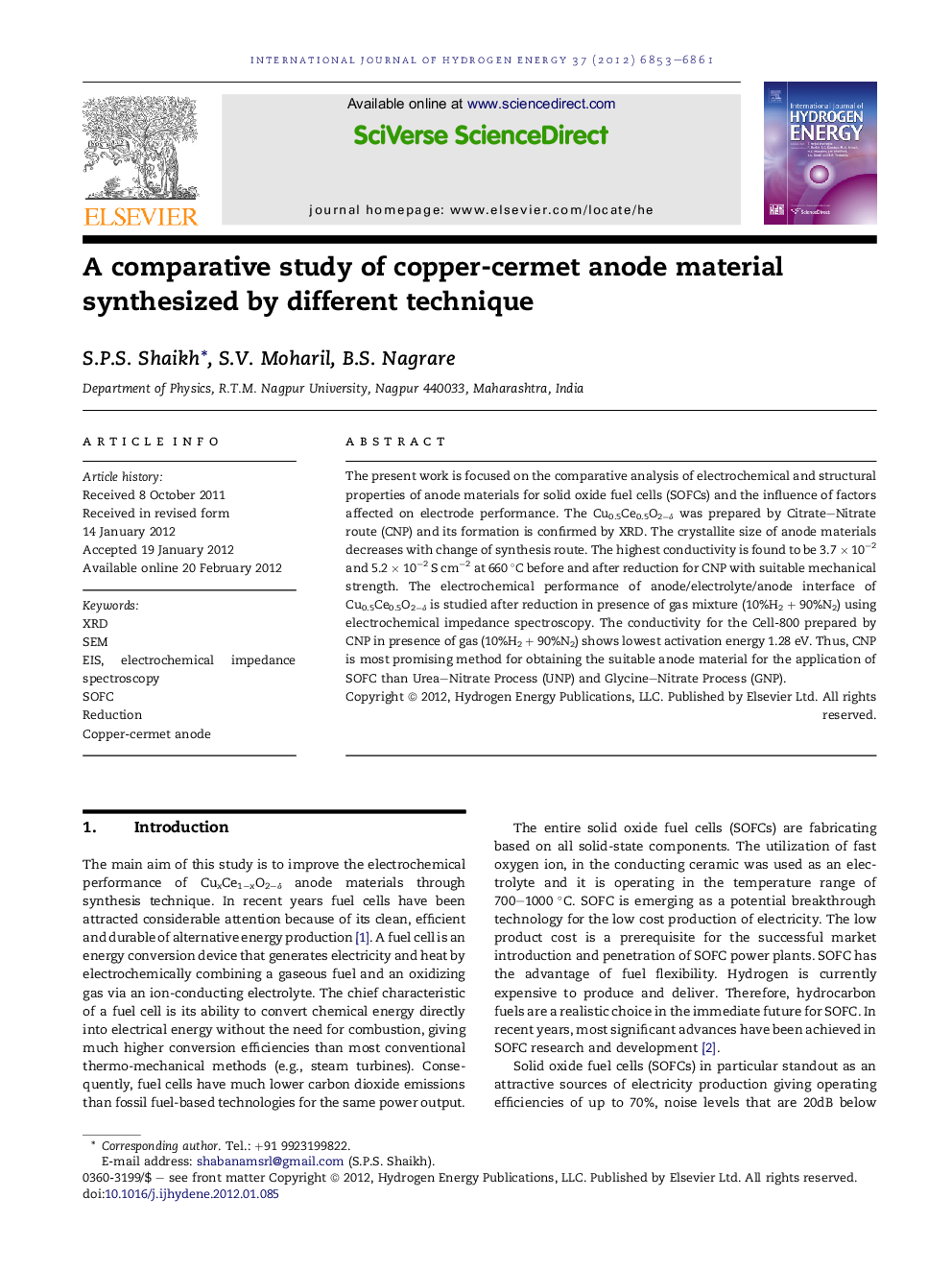| Article ID | Journal | Published Year | Pages | File Type |
|---|---|---|---|---|
| 1276629 | International Journal of Hydrogen Energy | 2012 | 9 Pages |
The present work is focused on the comparative analysis of electrochemical and structural properties of anode materials for solid oxide fuel cells (SOFCs) and the influence of factors affected on electrode performance. The Cu0.5Ce0.5O2−δ was prepared by Citrate–Nitrate route (CNP) and its formation is confirmed by XRD. The crystallite size of anode materials decreases with change of synthesis route. The highest conductivity is found to be 3.7 × 10−2 and 5.2 × 10−2 S cm−2 at 660 °C before and after reduction for CNP with suitable mechanical strength. The electrochemical performance of anode/electrolyte/anode interface of Cu0.5Ce0.5O2−δ is studied after reduction in presence of gas mixture (10%H2 + 90%N2) using electrochemical impedance spectroscopy. The conductivity for the Cell-800 prepared by CNP in presence of gas (10%H2 + 90%N2) shows lowest activation energy 1.28 eV. Thus, CNP is most promising method for obtaining the suitable anode material for the application of SOFC than Urea–Nitrate Process (UNP) and Glycine–Nitrate Process (GNP).
► Focus to improve the electrochemical performance of CuxCe1−xO2−δ anode materials. ► Electronically and mechanically CNP is more suitable for CuxCe1−xO2−δ preparation. ► Four-probe method is used to measure the D.C. conductivity of all samples. ► D.C. conductivities are improved after reduction of CuxCe1−xO2−δ in 10%H2 + 90%N2. ► The ASR of Cell-800 prepared by CNP found to be 116.36 Ω cm2 which is lowest.
